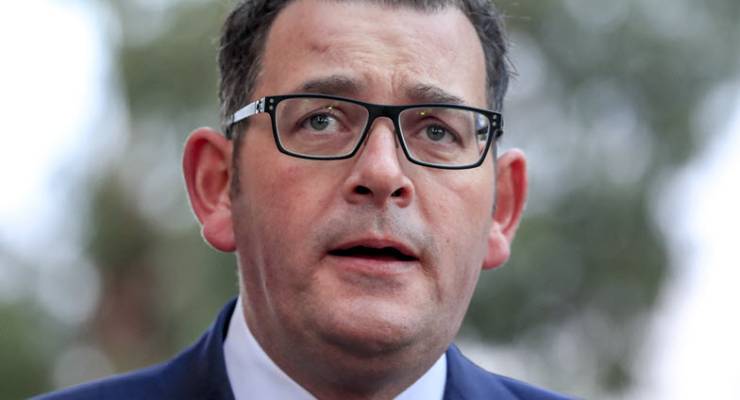
Are states that are reluctant to allow coal seam gas development about to be forced to let rip with fracking? Are we set for a showdown between NSW and Victoria, the two big CSG recalcitrants, and the federal government over GST allocation?
Would-be frackers probably shouldn’t get their hopes up.
After all the chest-beating and posturing over the weekend from Energy Minister Josh Frydenberg and the Victorian government, you might be forgiven for thinking the Commonwealth Grants Commission — those earnest abacuses whose job, unusual among bureaucrats, it is to ensure exactly none of their key stakeholders are ever happy — had drawn a bead on those head-in-the-sand types in Sydney and Melbourne who won’t allow the development of coal seam gas, usually for penny-ante reasons like protecting farmland or preventing contamination of water resources.
What the CGC said in a paper released last Thursday was:
“The Commission could take the view that all States that have CSG have the opportunity to exploit it and whether they do or not solely reflects policy choice. Similarly to gambling revenue, this view could lead to an EPC assessment of States’ capacities to raise royalty revenue from CSG production, meaning that the royalties raised on CSG gas would not lead to a redistribution of GST revenue away from an EPC [equal per capita] distribution.”
That means not that states that don’t allow fracking will be punished but that the states that do allow it (Queensland and South Australia) and reap royalties from it will no longer lose part of those royalties through an offset to their GST allocation. The difference is that the financial impact on NSW or Victoria will be that those states will lose an amount of their GST allocation that would otherwise have come from Queensland and South Australia’s allocations. The amount would be the royalties raised on CSG by Queensland and South Australia, minus how much of the royalties those states would otherwise have kept under the existing formula (i.e. we’re only talking about an increase in the amount the states get to keep, not all of it). To get the actual figure, you’d then have to split that amount between the states and territories.
To give you an idea of what that means, in 2018-19, the Queensland government forecasts petroleum royalties (which include CSG) of $194 million. The final impact might be a $20 or $30 million cut in NSW and Victoria’s GST allocation, if that. In 2018-19, NSW is currently slated to get $17.6 billion in GST revenue. What the CGC is suggesting is a fraction of a parameter variation, even though NSW and Victoria will fight tooth and claw for every buck.
Not, of course, that any of this will happen any time soon: the Grants Commission has only said it will think about the issue in the context of its 2020 review. And you can bet NSW and Victoria will make their views known very strongly.
By the way, the CGC casually dropped that “similar considerations also apply to the mining of uranium”, which should please the beleaguered Minerals Council of Australia. Don’t expect to see Josh Frydenberg championing that any time soon, even if the South Australians think it’s a great idea.
As the CGC notes, Western Australians already missed out on (a little) GST revenue because gambling revenue isn’t taken into account in GST allocation (or more correctly, it is assumed on a per capita basis that WA does allow gambling like other states). Extending this approach from its stated intention “to remove any incentive for a State not to raise its own revenue as a way of increasing its share of GST revenue” to becoming a policy tool for the Commonwealth to drive preferred outcomes at the state level would be an arcane but significant step, with intriguing implications, good or bad depending on your point of view. States and territories that have high environmental standards for extractive industries might be deemed to be not raising revenue, and the GST allocation adjusted in favour of states with lower environmental standards. States without levies on certain items like insurance, or low levies, could be deemed to be not raising revenue. States with payroll tax exemptions could be regarded the same way. States with strong workplace protection laws could be as well.
For an activist Commonwealth government of one persuasion or another, it might prove a very tempting tool.








Easy way out for NSW and Vic. Let fracking rip full steam ahead. Royalty rate of $5k a litre. The market will decide. Problem sorted.
So to clarify… the incentive to allow fracking, is a slightly more favourable consideration of revenue-sharing arrangements; of the type that the Commonwealth has happily reneged on recently (eg. the money from the ports lease).
Can’t imagine why Andrews would say no to digging up our backyard to save Trembles neck.
Or why he’d expect them to be satisfied with pouring the entire Bass Strait reserve down the Tamworth Tomatos thirsty throat while he sits on a huge reserve of his own ‘cos the price hasn’t soared high enough yet.
It’s heartening knowing that Queensland politicians’ addiction to CSG & fracking isn’t contagious.
Let’s hope the Four Corners’ episodes last week and tonight are only the beginnings of a series that exposes what a diabolical shambles Queensland really is in.
If we’re trying to make all things the same across all jurisdictions, then maybe the feds should tackle land tax (or the lack thereof) in the NT.